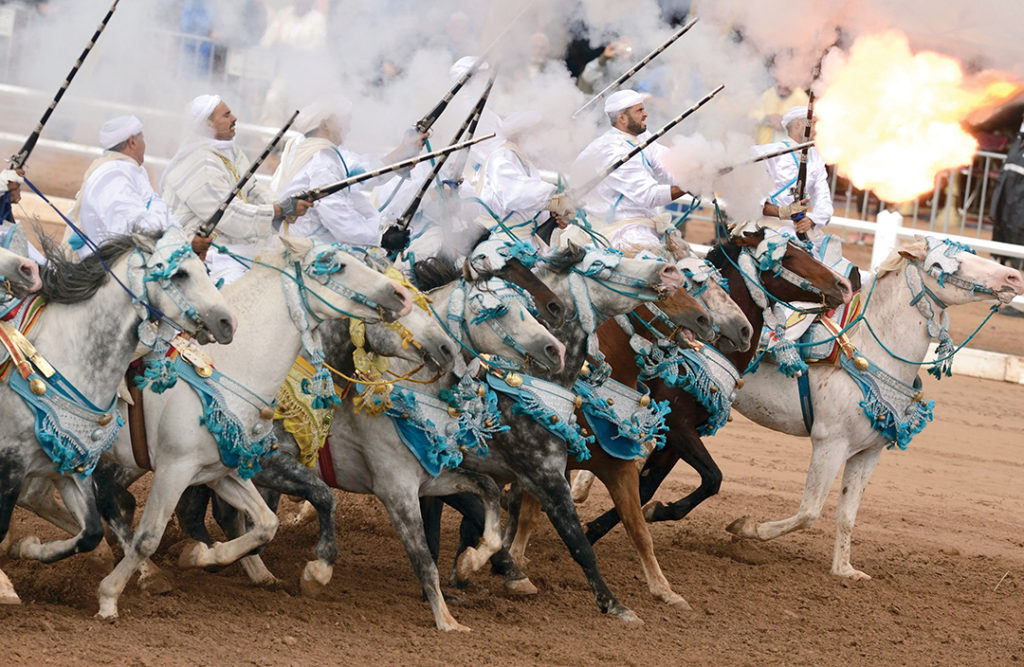AGENCE FRANCE-PRESSE
The equestrian art known as tbourida, inspired by the historical charges of the cavalrymen of Morocco, fascinated painter Eugene Delacroix two centuries ago and still draws enthusiastic crowds today.
At the October 2016 Salon du Cheval show in El Jadida, western Morocco, thousands were enthralled by the spectacle of groups of riders in traditional dress charging in a line and then coming to a halt with a synchronized firing of their muskets in a deafening and pungent blast of gunpowder.
The 15 finest troops of cavalrymen from across the North African country competed in the first King Mohammed VI Grand Prix of tbourida, taken from the word for gunpowder in a local dialect, at the sandy exhibition grounds of the port city of El Jadida.
The event showcased “the traditional equestrian art of Morocco dating back to the 13th century,” Hamid Benazzou, who heads an association on Moroccan horses, told Agence France-Presse.
Mustapha Mallagui, 42, a civil servant and part-time farmer who rides with the sorba, or troop, from Fes-Meknes in central Morocco, said “tbourida and its horses are like a work of art.”
“Historically, [Arab and Berber] tribes would celebrate victories with the tbourida to display their equestrian know-how, their handling of guns, the beauty of their harnesses. It was a sort of military parade,” Mallagui said, standing under one of the huge red-carpeted tents set up for competitors.
Today, the tribal wars are over, but the rituals remain a part of traditional festivities in the countryside. Villages and towns all have their own sorba, and a nationwide contest selects the best troop from each region.
The tradition of tbourida is deeply ingrained in central Morocco and the southern deserts, where cavalrymen in their majestic blue gandoura, or caftans, fire not in the air but into the ground because, as Mallagui explained, “the enemy is hidden in the sand and not in the mountains.”
“Before, there were no tanks, no planes in wars … there was only the horse,” he said.

